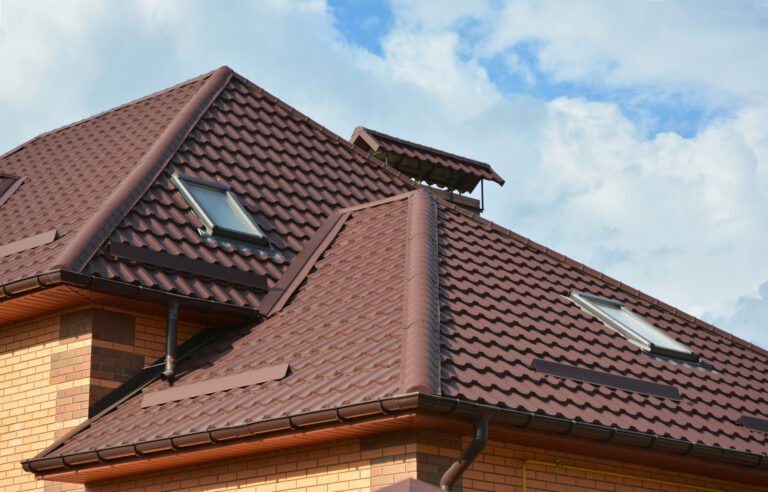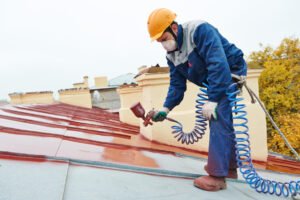Roof tiles are one of the most popular covers to create a sturdy and weather-resistant aesthetic roof. But there are, of course, many types of tiles with different layouts and properties. So, how do you pick the best roof tile and material for your home?
Well, we are here to help you with a detailed guide on 13 types of roof tiles, along with their costs, pros, and cons for reference. So, let’s dive into the list!
Key Takeaways
- Heavier Clay, Slate, Solar, and Concrete roof tiles are the best for gentle-slopes or flat roofs. But lighter Metal and Rubber tiles are more flexible and fit onto steep, multi-layer roofs.
- Metal, Slate, Composite, and Rubber roof tiles are moisture and fungus-resistant. But, they need insulation and a felt underlayer to absorb the noise during rain.
- Slate, Concrete, Composite, and Solar tiles resist heat and sun damage in drier areas. And they also keep the roofs cooler and reduce operating costs.
- Metal and Composite roof tiles look industrial, whereas Clay or Slate ones look aged. But that’s not all! Join us to learn more design and decor tips with roof tiles here!
What Are Roof Tiles & Why Should You Use Them?
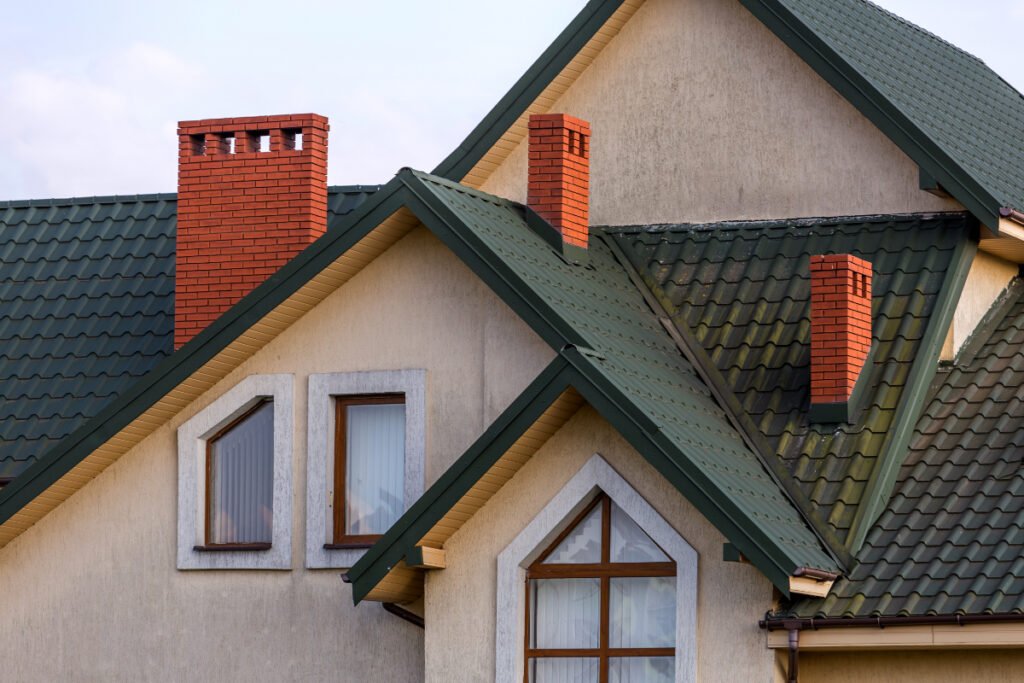
Roof tiles are curved, hollow blocks that fit along the roof rafters and create a sturdy roof cover. Being flexible, they can be embedded into roofing cement or screwed along the valleys.
Moreover, they make tight air seals and prevent stormwater from entering your home. They also support different types of roof vents, tanks, and flashings at the top, making them an excellent choice for roofing.
Popular Roof Tiles for Better Strength & High Curb Appeal
Roof tiles are a great way to personalize your home, but they vary with the materials, cost, and overall lifespan. So, let’s discuss each roof tile in detail and identify their pros and cons for easier selection.
1. Clay Roof Tiles
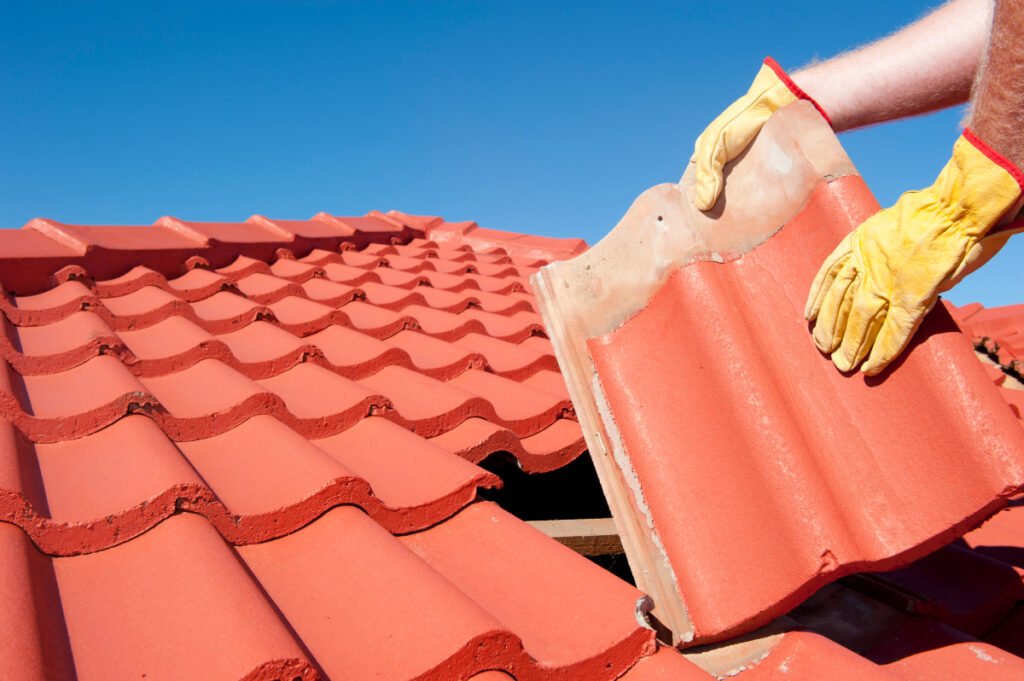
Clay roof tiles are flat or barrel tiles of terracotta clay, silica, and aluminum oxide. They are wavier and have an interlocking profile that fits onto flat and pitched roofs. So they are easier to fix and need less nailing and cementing.
These tiles are also more durable and have excellent wind and fire resistance. Besides, they do not bend or buckle easily, and maintain water-tight joints for long. So they need less insulation, roof flashing, and fungal treatments.
However, clay tiles are fragile and cannot bear heavy hail or snow load. So, you must add suitable fillers and glaze them with enamel for high-impact resistance. Or, you can use a vapor barrier under the tiles to save them from water damage and decay.
| Average Cost | $50 – 100 per square |
| Average Lifespan | 50 – 80 years |
| Popular Colors | Brown, Black, Green, Rust, Maroon |
| Size | 270 X 170 X 12 mm |
Pros:
- High fire, wind, and fungal resistance
- Extremely durable, and easier to interlock
- Eco-friendly and recyclable
- Versatile; Mediterranean, Farmhouse or Craftsman ambiance
- Better cooling and ventilation
Cons:
- Costly; Difficult to install or replace
- Brittle and does not support weight on top
- Limited tile profiles and colors
- Heavy and difficult to maintain
Clay tiles are extremely heavy and might buckle or deform with age. So, you must brace the trusses to distribute the tile weight uniformly.
2. Metal Roof Tiles
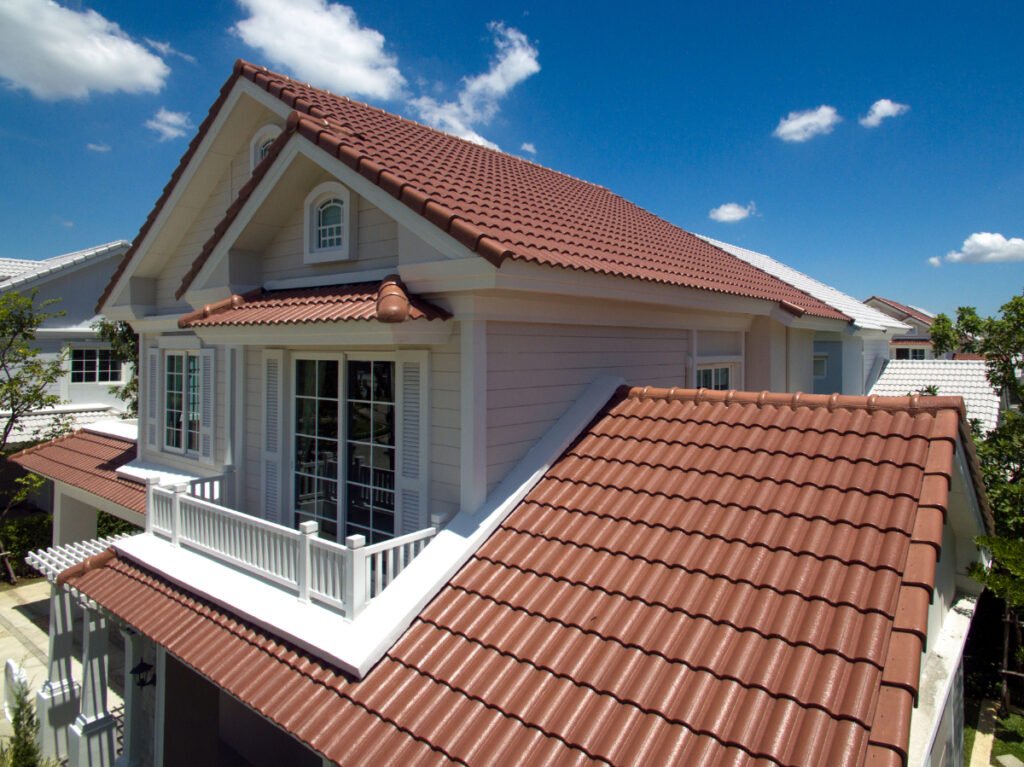
Metal roof tiles are vaulted steel, aluminum, or copper sheets with a zinc finish or powder coat. They are thin, lightweight, and easier to screw onto roof pitches or multilayer roofs. Plus, they don’t crack or break and need less maintenance than others.
Metal tiles are also very durable and resist the sun and snow efficiently. And though they might dent or catch fungus with heavy rain, you can restore them with enamel. Since these tiles reflect UV rays, they keep the attics ventilated.
However, metal roofs are very noisy and need thicker foam or batt insulation. Plus, they might even deform the roof in humid areas and cause water pooling and leakage. So, it’s best to grease them and add the right number of roof vents to keep the roof dry.
| Average Cost | $300 – 500 per square |
| Average Lifespan | 30 – 50 years |
| Popular Colors | White, Tan, Beige, Emerald Green, Red |
| Size | 600 X 1200 X 6 mm |
Pros:
- Lightweight; Easy to lay and screw
- Energy-efficient and high heat retention
- Low upfront cost and labor charges
- High sun, snow and warping resistance
Cons:
- Vulnerable to rusting and corrosion
- Poor sound control and impact resistance
- Vulnerable to denting and deformation
- Lower durability and heavy maintenance
Brush the metal tiles with neem-oil, silicone or WD-40 tubes for better pest and rust control.
3. Concrete Roof Tiles
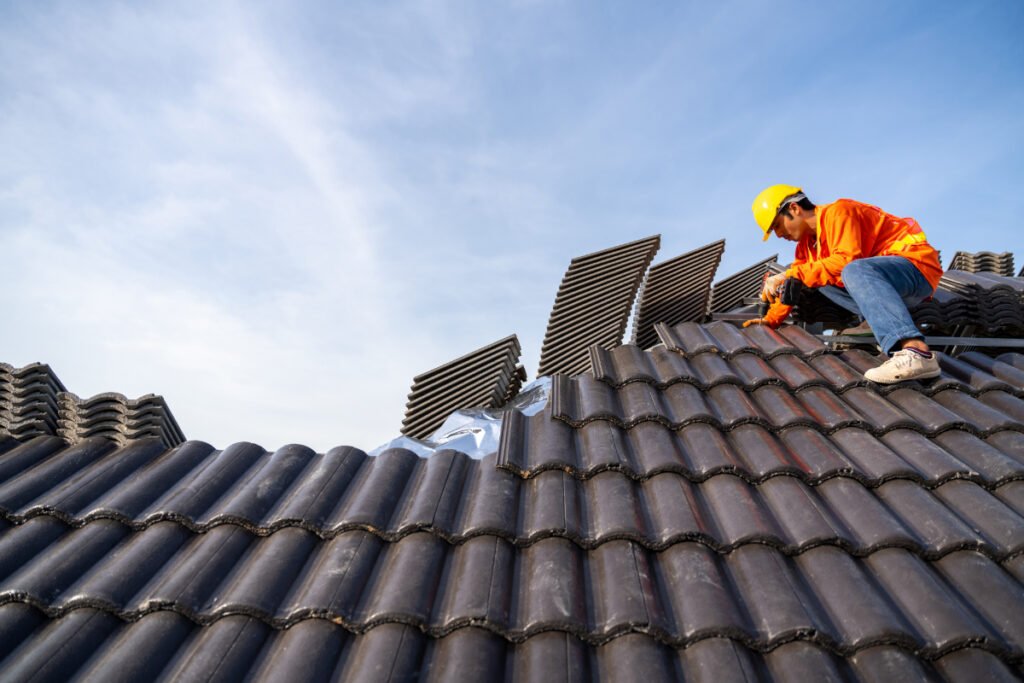
Concrete roof tiles are tubular plastic-coated cement tiles with thicker and curved profiles. They are more inclined and have an extra waterproofing layer to resist water damage. So, they are durable and can also fit onto high-pitched and gentle slopes!
Moreover, these tiles have an excellent Class A fire rating and heat resistance. So, they keep the roofs cooler and lower the energy use. And since they don’t expand or contract, you won’t need to add much insulation or vapor barriers.
But concrete tiles can erode and might catch fungus in humid areas. They might even discolor and lower the curb appeal with time. So, limit them to dry or temperate climates or add a bitumen felt to control the moisture.
| Average Cost | $4 – 16 per square foot |
| Average Lifespan | 30 – 40 years |
| Popular Colors | Gray, Red, Black, Beige |
| Size | 600 X 1200 X 20 mm |
Pros:
- Durable and Easy to Maintain
- High Fire, Heat, and Snow resistance
- Customizable and Sustainable
- Sturdy and Affordable
Cons:
- Heavy and Difficult to Install or Replace
- Poor moisture and leakage control
- Susceptible to mildew and fungus
- Prone to weathering and discoloration
Seal the concrete tiles with fungicides, neem oil or anti-insect sprays for better pest and fungus resistance.
4. Composite Roof Tiles
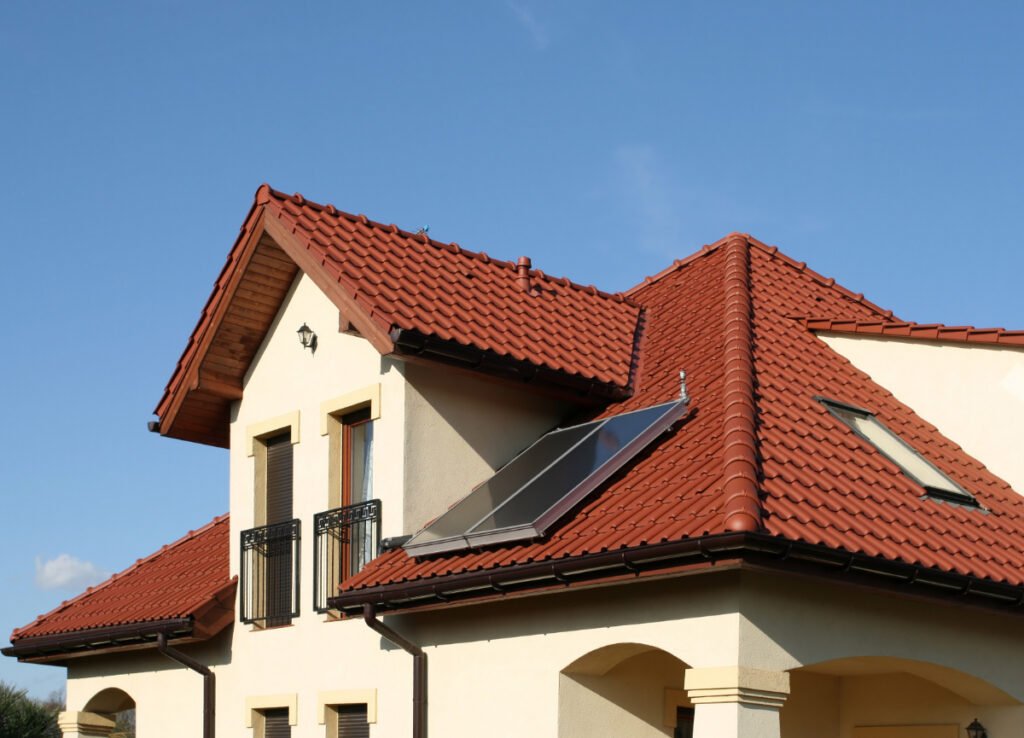
Composite roof tiles are fiberglass, or ceramic sheets dipped in resin or plastic. So, they are thicker and have a high impact resistance that withstands heat and heavy rain.
Composite shingles are also more sustainable and energy-efficient and reduce cooling costs drastically. But they don’t retain heat for long and might need extra insulation or thermal coating. And since they are brittle, they might dent easily and disturb the roofline.
| Average Cost | $400 – 500 per square |
| Average Lifespan | 50 – 60 years |
| Popular Colors | Slate, Cottage Red, Hunter Green, Brown, Blue, Pewter |
| Size | 300 X 610 X 15 mm |
Pros:
- High impact and weather resistance
- Thick, Flexible, and Easy to Install
- Compact and Water-tight joints
- High resistance from insects and fungus
Cons:
- Limited sizes and colors
- Needs professional labor and cannot be DIY
- High initial cost
- Lower insulation and heat control
Cover the composite tiles with a faux veneer and add an enamel top coat for a modern exterior.
5. Slate Roof Tiles
Slate tiles are flat, rectangular tiles with an inclined cross-section and thick sides. These tiles are quite durable but are very small and heavy. So, they are difficult to lay and need more fillers and sealants for stability.
But slate tiles are long-lasting and can resist weathering and pests easily. They might catch fungus and turn greenish with age, but you can reglaze them again with regular soap. Or, you can coat them with enamel for better moisture resistance.
However, slate shingles are heavy and need proper fasteners for better fixing. They are also very brittle and might chip with excessive nailing or gluing. So, using smaller GI screws is advisable.
| Average Cost | $690 – 1000 per square |
| Average Lifespan | 75 – 90 years |
| Popular Colors | Black, Darkgreen, Gray |
| Size | 300 X 300 X 20 mm |
Pros:
- High insulation and low energy use
- Aesthetically pleasing and seamless
- High durability and low maintenance
- Fire, Heat and Fungus resistant
- High resale value
Cons:
- Heavy and Difficult to Install
- High initial cost and labor charges
- Limited colors and sizes
Clay tiles are extremely heavy and might buckle or deform with age. So, you must brace the trusses to distribute the tile weight uniformly.
6. Solar Roof Tiles
Solar tiles are large, electricity-generating tiles with attached solar panels and heating devices. They are thick and heavy and cannot be mounted on flat or gentle roofs. They also need professional installers to care for all the wiring.
You must also note that solar tiles are less effective in snowy regions and might need heating devices to work properly. Plus, they might lose their shine and weather with age, and must be reglazed periodically.
But since they are synthetic, you won’t have to worry about fungus and pests! So, you can use them in tropical or humid areas without extra insulation. But, you must use a flat, shed-roof, or hip roof design with this one.
| Average Cost | $500 – 700 per square |
| Average Lifespan | 20 – 30 years |
| Popular Colors | Black, Gray, and Green |
| Size | 800 X 700 X 20 mm |
Pros:
- Modern, Seamless, and Weather-tight joints
- High efficiency and lower energy cost
- Easy to install than standard solar panels
- High fungus resistance
Cons:
- Larger sections and heavyweight
- Electricity output changes with the climate and sun direction
- High upfront cost
Mount the solar tiles on Southern or Western slopes to generate more electricity and heat.
7. Plastic Roof Tiles
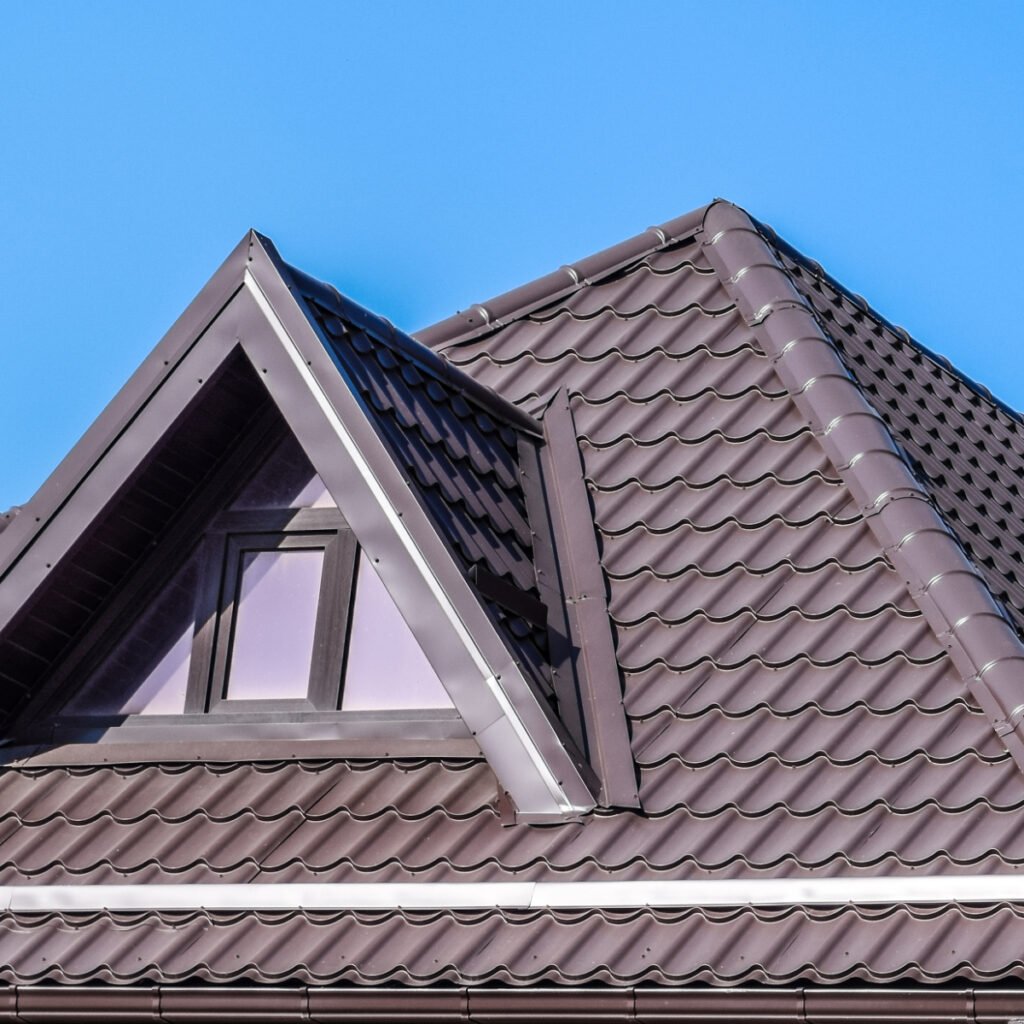
Plastic roof tiles are recycled polymer tiles with extra latex coats to save them from breaking. They are light and bend well along abstract roof shapes and multi-layer roofs. Plus, they are easy to fix and can be embedded directly into the roofing cement.
But plastic tiles aren’t durable and are only recommended for even climates. And they are highly flammable and might melt or deform with heat. So, you must install a roof vent to keep them cooler. Or, you can powder coat or paint them for better moisture control.
| Average Cost | $4 – 8 per square foot |
| Average Lifespan | 20 – 30 years |
| Popular Colors | Black, White, Gay, Red, Green, Blue |
| Size | 265 X 165 X 20 mm |
Pros:
- Lightweight and Easy to fix
- Versatile to different roof shapes and designs
- Better water and fungus resistance
Cons:
- Might melt in high heat and tropical regions
- Low fire, wind and sound control
- Brittle and low impact resistance
- Crude finish and low curb appeal
Paint the plastic tiles with a shiny intumescent or cement paint and add a Class A fire cover to save it from melting.
8. Rubber Tiles
Rubber tiles are recycled polymer tiles with wood or slate dust for better durability. They are more flexible and can be screwed or glued to different roof designs and pitches. And since they are lightweight, they can also fit onto older rafters and trusses!
Moreover, rubber tiles have excellent moisture and heat control and improve the energy efficiency of the roof. They might warp with rain but can be easily restored with simple plungers or rakes. Or, you can add roofing felt to bind them together and reduce leakage.
But note that rubber tiles have a nasty smell and need proper surface treatments before installation. And since they have a low fire rating, you mustn’t use them in dry areas or near the woods.
| Average Cost | $4 – 8 per square foot |
| Average Lifespan | 25 – 40 years |
| Popular Colors | Black, White, Slate, Gray, Brown |
| Size | 60 X 60 X 10 mm |
Pros:
- High wind, rain, and snow resistance
- Eco-friendly and sustainable
- Lightweight and easy to install or replace
- Non-porous and impact resistant
Cons:
- Might warp or sag with excess moisture
- Susceptible to heat and fire damage
- Might stain or discolor with time
Wash the rubber tiles with vinegar and neutral pH cleaners to deodorize them on a budget.
9. Ceramic Tiles
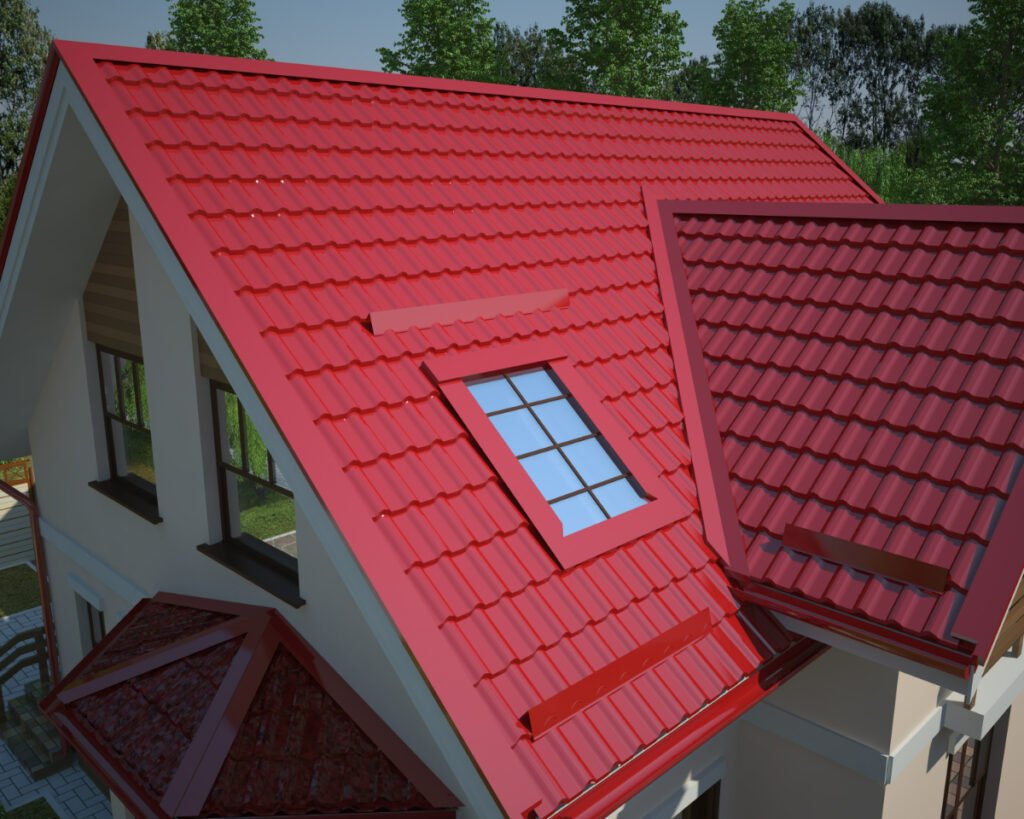
Ceramic tiles are natural white clay tiles with a glossy enamel coat or a wax finish. They are more durable than traditional clay tiles and perform better in extreme climates. They also reflect more UV light and reduce the air-conditioning costs inside.
Ceramic tiles are also more flexible and easily fit onto steep and gentle slopes. Plus, they do not catch fungus and don’t stain or discolor easily.
However, ceramic tiles are porous and might absorb the excess runoff in humid areas, causing them to bulge and leak with time. So, adding a dehumidifier or vapor barrier is essential.
| Average Cost | $4 – 16 per square foot |
| Average Lifespan | 30 – 40 years |
| Popular Colors | White, Gray, Beige, Red, Black |
| Size | 418 X 333 X 15 mm |
Pros:
- Versatile; Adapt to different roof shapes and designs
- Better fungus and climate resistance
- Lightweight and affordable
Cons:
- Porous and vulnerable to water damage
- Low impact resistance
- Prone to bulging and warping with time
Add a non-porous bitumen felt or cement underlayer to reduce water absorption and save the tiles from decay.
Types of Roof Tiles Based on Design and Style
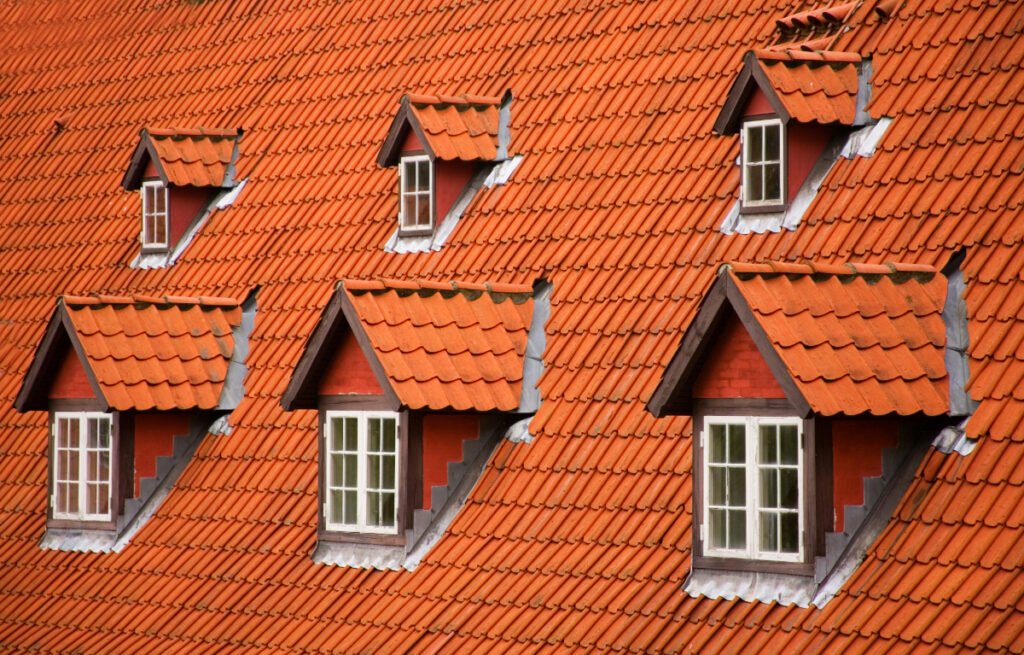
Roof tiles aren’t always flat; you can also customize an aged vintage or farmhouse ambiance with the different roof tile designs available. So, here’s a list of fancier and trendier roof tile styles for reference.
10. Spanish Roof Tiles
Spanish roof tiles are S-shaped rubber or plastic tiles with a wavy form and mid-century ambiance. They look quite Tuscan and come in organic colors like beige, brown, gray, and tan. Plus, they are also more affordable and cost $5 – 10 per square foot.
11. Barrel Roof Tiles
Barrel roof tiles are cylindrical terracotta tiles with hollow and curved profiles. They form a series of concave and convex curves along the roof and look Mediterranean in style. And their reddish-brown tinge adds more warmth and depth to the exterior.
12. Japanese Roof Tiles
Japanese roof tiles are humped clay or terracotta tiles with a smokey gray or brown glaze. They not only look rustic and luxurious but also add a lovely Victorian look to the roofline. But, they are more costly and cost about $20,000 – 30,000 for the entire roof.
13. Chinese Roofing Tiles
Chinese roofing tiles are long and tubular bamboo or stone tiles. They are more traditional in appearance and have crude, lapped joints. But they look natural and friendlier and perfect for cabin-style or countryside houses.
Tips for Picking the Right Roof Tile for Your Home
- Always check the local building codes and ordinances before installation. You may need an additional permit for solar and slate roof tiles.
- Pick Class-A fire-rated concrete, slate, or clay roof tiles if you live in dry or thunder-prone areas.
- Choose composite, rubber, or metal roof tiles to withstand heavy rain and fungus. But add a felt underlayer or bitumen to absorb the noise.
- Use heavier slate, clay, or solar shingles for low-pitched or flat roofs. But choose lighter metal or ceramic tiles for a high-pitched roof.
- Use Spanish, Barrel, or Composite roof tiles for a crisp, modern look while going with Barrel or Japanese tiles for traditional decor.
How Much Does It Cost to Replace a Tile Roof?
Roof tile replacement usually costs about $4 – 12, depending on the size, material, and shape. So, you can expect to pay about $4000 to replace the tiles on a small, flat roof and about $16,000 for larger, multi-layer roofs.
Which Is the Best Roof Tile for Hot Climate?
Slate, Clay, and Ceramic tiles reflect the incident light and keep the roofs cooler in hot areas. But you can also use some solar tiles to absorb the heat and generate electricity for your house.
Can You Place Roof Tiles on Your Existing Trusses and Rafters?
You can install lighter metal or plastic tiles on your old trusses and rafters. But, you must reinforce the truss and add additional bracing plates while installing heavier slate or concrete roof tiles.
Roof tiles are durable but affect the home’s curb appeal and energy efficiency. Slate and composite tiles lower energy costs, but plastic ones are cheaper in the short term. And metal tiles are the best in dry climates, whereas rubber ones resist moisture.
One more option to reinforce the roof and cut the weather damage is to use synthetic asphalt or resin shingles. But are roof shingles better than tile roofs? Jump to our comparison on ‘Tile roofs vs. Shingle roofs’ to know the best option!

